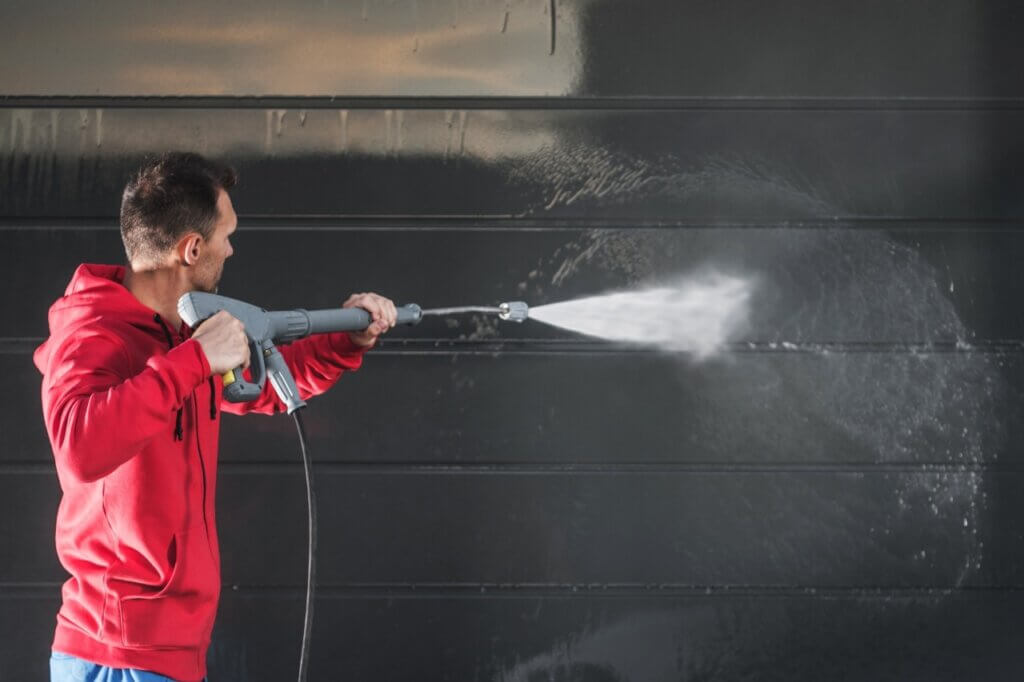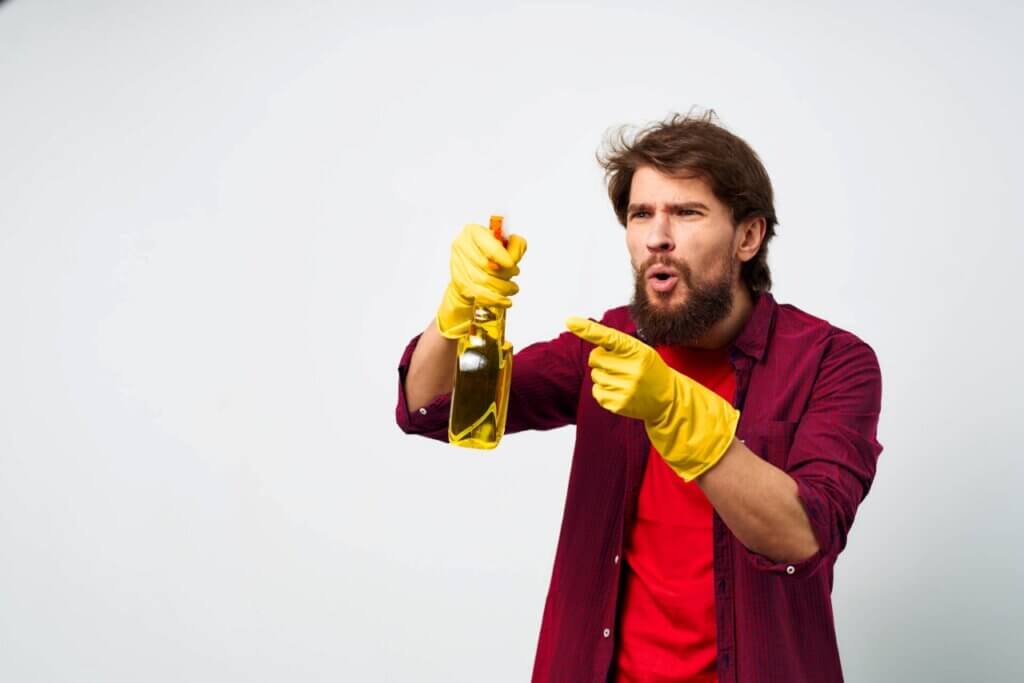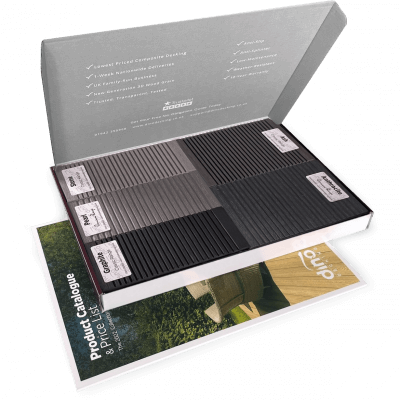5 Composite Decking Lighting Ideas
Our composite decking looks great in any setting, but you can really make your outdoor spaces shine with our decking
Products in Stock
Lowest Prices
Express Delivery
10-Year Warranty
Early April Sale. Up To 15% Off.

Let’s face it – nobody wakes up excited about cleaning their home’s cladding. But neglect it at your peril. Beyond just keeping your property looking smart, regular cleaning protects your investment and prevents costly damage down the line. Each cladding material has its own personality and cleaning quirks, so we’ve put together this no-nonsense guide to help you keep your building’s “outfit” in top shape. So without further ado, let’s take a look at how to extend the lifespan of cladding with some good old TLC.
Skip the regular clean and you’re asking for trouble. Dirt isn’t just unsightly – it’s the start of bigger problems. Those innocent-looking patches of moss and algae? They’re basically moisture traps that can rot timber or corrode metal over time. Bird droppings aren’t just annoying; they’re acidic and can cause permanent damage.
Stay on top of cleaning and you’ll spot potential issues before they become expensive headaches. Plus, there’s nothing like the satisfaction of seeing your home’s exterior looking fresh and well-kept – not to mention the boost to your property value.
Before you grab the bucket and sponge, keep these principles in mind:
Start gentle. You can always ramp up to stronger methods if needed, but you can’t undo damage from overly aggressive cleaning. Always test cleaning products on a hidden spot first – that obscure corner could save you from a very visible disaster.
Work methodically from top to bottom (unless you fancy cleaning the same section twice). Breaking larger walls into manageable sections helps keep you sane and ensures consistent results.
Weather matters enormously. Cleaning in blazing sunshine is a recipe for streaks as everything dries too quickly. And cleaning during a freeze? The expanding water could crack your cladding. Aim for overcast, mild days for the best results.
Composite cladding gives you the good looks of timber without quite as much maintenance drama, which is why so many many homeowners choose our durable wall cladding for home exteriors. For some simple routine cleaning, all you need is some warm soapy water and a soft brush to do the trick nicely. Rinse well afterwards, but don’t blast it with a pressure washer – your cladding won’t thank you for it.
Got stubborn stains? Check what the manufacturer recommends before trying anything fancy. Generally, oil marks respond well to a mild degreaser, while mould needs a gentle bleach solution (about 1 part bleach to 10 parts water).
UPVC is the low-maintenance dream, but “low” doesn’t mean “no.” A simple wipe-down with warm soapy water and a soft cloth keeps it looking fresh. For the tougher marks, a non-abrasive bathroom cleaner usually does the job.
Whatever you do, leave the scouring pads in the kitchen – they’ll scratch the surface. And always rinse thoroughly, as soap residue is a magnet for more dirt.
Wood requires more love than other materials, but it rewards you with character and warmth. Start with a soft brush to sweep away loose dirt. For a deeper clean, grab a wood-specific cleaner and follow the instructions on the bottle.
After cleaning, let the timber dry completely before you even think about applying preservatives or treatments. Most timber cladding needs re-sealing or re-staining every few years – consider it a spa treatment that keeps your wood looking great and weather-resistant.
Metal cladding generally behaves well with just warm soapy water and a soft cloth. With aluminium, avoid anything alkaline – including many household cleaners – as they can leave unsightly marks. Steel might occasionally flirt with rust spots, which need a targeted cleaner.
Thorough rinsing is crucial to remove all soap residue. An occasional once-over with a suitable metal polish not only looks great but adds extra protection against the elements.
Brick is generally the strong, silent type that rarely asks for much cleaning attention. When it does get grubby, a stiff brush usually sorts out loose dirt. More stubborn stains might need a mild detergent solution and some elbow grease.
Those white chalky deposits (efflorescence) need a specific brick cleaning solution. Always wet the brick before applying any cleaner – dry brick is thirsty and will drink up whatever you apply, making it harder to remove.
Natural stone deserves gentle treatment to preserve its unique character. Begin with plain water and a soft brush for surface dirt. When you need something stronger, stick to pH-neutral stone cleaners – acidic products will attack the stone.
Pressure washing is okay for some stone types if you use low pressure and keep a safe distance. After cleaning, consider a breathable sealant for added protection – think of it as sunscreen for your stone.
Glass cladding shows every mark, so regular cleaning is essential for that crystal-clear look. A simple solution of warm water with a splash of vinegar or a dedicated glass cleaner works wonders. Apply with a soft, lint-free cloth or squeegee for best results.
Avoid tackling glass in direct sunlight unless you enjoy the challenge of fighting streaks. For tall buildings, this is one job best left to the professionals with proper safety equipment.

It’s tempting to reach for the industrial-strength cleaner when facing stubborn stains, but harsh chemicals often do more harm than good. Beyond damaging your cladding, they can harm nearby plants and contaminate water. Gentler options might take more time, but they won’t leave you with bigger problems.
The pressure washer might be your favorite weekend toy, but dial it back when cleaning cladding. Too much pressure can force water behind the cladding – a recipe for damp problems you can’t see until they’ve caused serious damage.
This isn’t just about keeping cleaning solution off your favorite shirt. When working at height or with cleaning products, proper safety gear is non-negotiable. Gloves, eye protection, proper footwear, and secure ladders or platforms aren’t just suggestions – they could save you from serious injury.
Those cleaning guidelines that came with your cladding weren’t just padding out the manual. Following them helps maintain your warranty coverage and extends the life of your cladding. When in doubt, check the manufacturer’s recommendations.
Letting dirt build up makes cleaning much harder when you finally get around to it and increases the risk of permanent damage. Understanding how to extend the lifespan of cladding starts with a regular cleaning schedule – think of it as routine maintenance rather than a major project.
Some jobs are best left to the experts. If your building is taller than two storeys, the risk of working at height probably outweighs the money saved doing it yourself. Similarly, heavily soiled cladding might need specialist equipment and expertise to clean without causing damage.
If you’re unsure about the right approach for your specific cladding, professional cleaners bring peace of mind along with their expertise. They also have access to specialized equipment and cleaning solutions that get better results with less risk.
Looking after your cladding isn’t complicated, but it does require a bit of regular attention. Follow the right cleaning approach for your particular material, address small issues promptly, and you’ll keep your building looking great for years.
A bit of prevention goes a long way too. Well-designed guttering and overhangs minimize water exposure, while keeping vegetation trimmed back reduces moisture and organic growth problems. These small measures can add years to your cladding’s life.
With the right care and regular attention, your cladding will keep protecting and enhancing your property throughout its intended lifespan – and probably well beyond.

Our sample pack contains a sample piece of each colour currently available. Order your free sample pack today to compare the colours and get a true feeling of the Dino Decking range!
Our composite decking looks great in any setting, but you can really make your outdoor spaces shine with our decking
If the idea of having rats under your decking makes you shiver, don’t worry. We’ll let you know the signs
Business hours
Monday: 09:00 – 17:30
Tuesday: 09:00 – 17:30
Wednesday: 09:00 – 17:30
Thursday: 09:00 – 17:30
Friday: 09:00 – 17:30
Saturday: Closed
Sunday: Closed
Contact us
01942 355968
support@dino.co.uk
Collection Address: Unit 1 Wetheral Close Hindley Ind Estate Wigan Greater Manchester North West WN2 4HS
Pages
Products
Testing
Copyright 2025 Dino Decking Ltd All Rights Reserved.
VAT Number: GB296097848.
Company Number: 10837233.